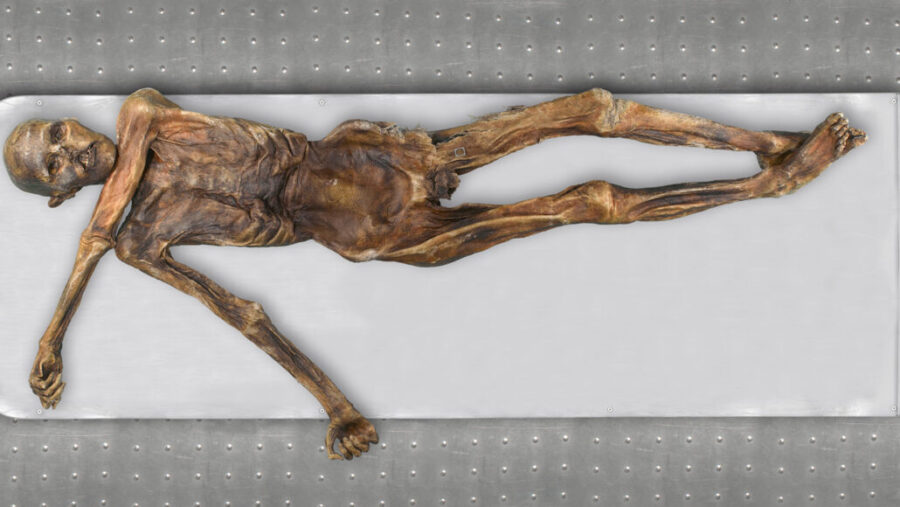In the Tyrolean Alps, over 5,300 years ago, Ötzi the Iceman met his untimely demise. His perfectly preserved remains, discovered melting out of a glacier in 1991, have intrigued scientists for decades. A fresh analysis of Ötzi’s DNA, however, has thrown a curveball into our understanding of his ancestry and physical traits.
In 2012, researchers constructed a comprehensive portrait of Ötzi’s genome, suggesting that his ancestors hailed from the Caspian steppe. At the time, this revelation provided a unique glimpse into the past, however, new information has come to light.
Archaeogenetic Johannes Krause and his team at the Max Planck Institute for Evolutionary Anthropology in Leipzig, Germany, revisited Ötzi’s genetic code and stumbled upon an unexpected twist. The 5,300-year-old Iceman, it turns out, “is too old to have that type of ancestry,” as Krause explains. His previous genetic makeup, which hinted at steppe ancestry, has been debunked.
The latest analysis, published on August 16 in Cell Genomics, not only refutes the steppe ancestry but also sheds light on new mysteries surrounding Ötzi’s heritage. Surprisingly, approximately 90 percent of his genetic makeup is linked to Neolithic farmers, a notably high proportion compared to other Copper Age individuals. This challenges our preconceptions about the gene pool of ancient Europeans.
Furthermore, the Iceman’s genome discloses intriguing details about his physical appearance. Contrary to previous artistic depictions, Ötzi had dark skin and suffered from male-pattern baldness. These findings shed light on the evolution of skin colour in early humans. Genes responsible for lighter skin tones only became prevalent between 4,000 to 3,000 years ago when farming communities shifted from a diet rich in fish and meat to one centred on plant-based foods, resulting in decreased vitamin D intake.
Krause explains,
People that lived in Europe between 40,000 years ago and 8,000 years ago were as dark as people in Africa, which makes a lot of sense because [Africa is] where humans came from. We have always imagined that [Europeans] became light-skinned much faster. But now it seems that this happened actually quite late in human history.
Johannes Krause, Archaeogenetic
The study of ancient DNA, exemplified by Ötzi the Iceman, offers a unique window into the past, allowing us to further explore our collective ancestry and challenging long-standing assumptions. As we continue to explore the genetic makeup of our forebears, we gain a deeper understanding of our shared history and the remarkable journey that has shaped humanity over millennia.
Image Source:
- Otzi the Iceman: Science news




